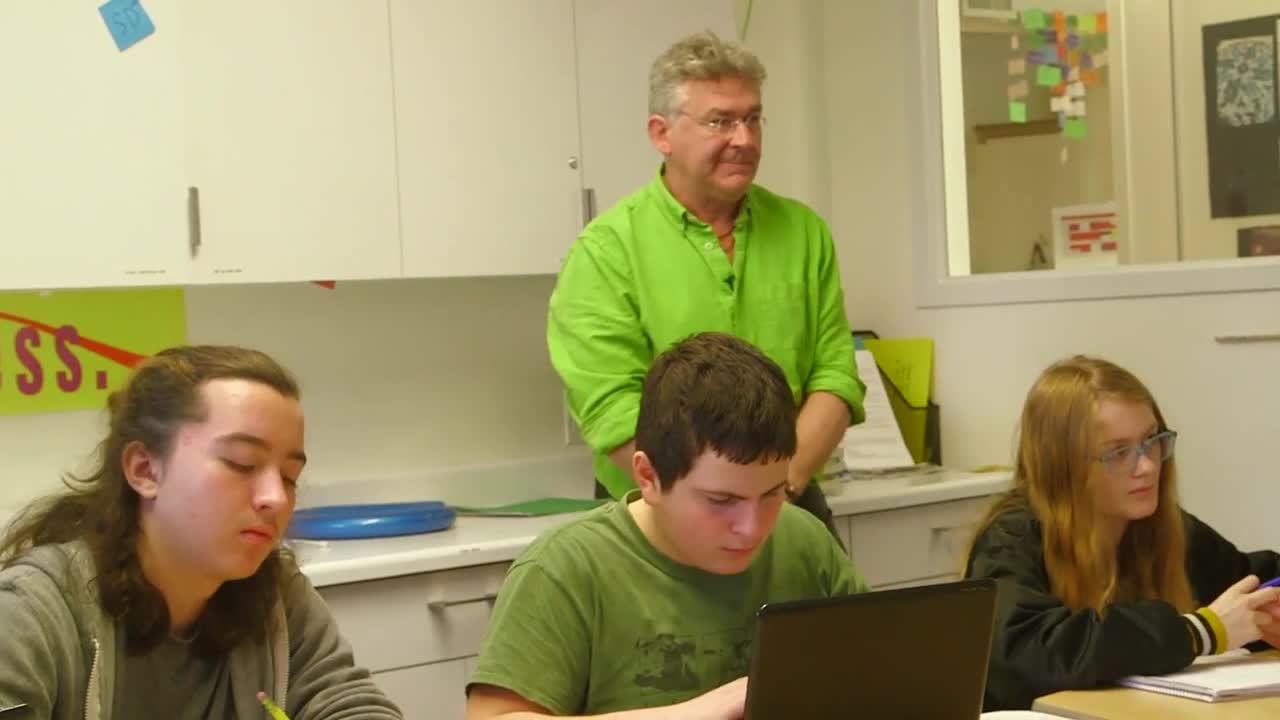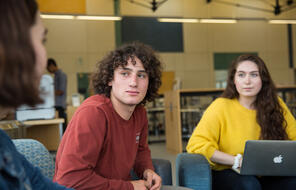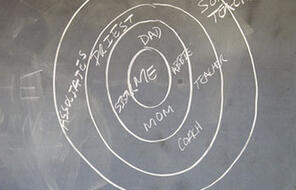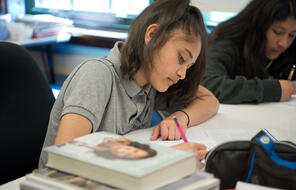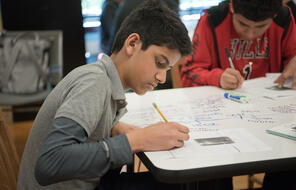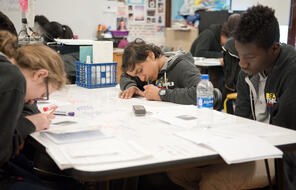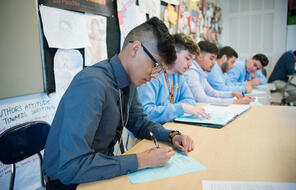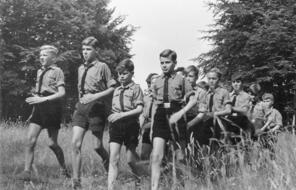The scope and sequence that Facing History gives teachers allows us to teach history. We're teaching about moments and important facts. But we're learning how to empathize, and we're learning how-- we're teaching students how to, not only understand history, but to find their own connections to it. This, at times, can be emotionally wrenching. This can be something that affects them and their personality. This can be something that builds their identity. And they often need to do something with it. In today's class, the students are going to see and hear survivor testimony. It's not just listening to a story. I use video of testimonies of people who are survivors in my course, give them the experience first of just listening and watching. And then I would go back and show it again. In doing that, I would allow them to then capture the information. So they have the emotional connection first, then deal with the factual pieces. Because they will get so focused on, what was the name of that concentration camp? How do you spell it? That's so middle school. That's fine that that's what's important to them. And it's my job to make sure that I don't care about the spelling of Auschwitz. So before I play our first video of survivor testimony, let's set up for doing twocolumn note-taking. So a blank page in your notebook with a line down the middle, that's your setup. I'm suggesting you set up the left column with a label of big ideas. I call it big ideas. You can call it main point. You can call it facts. It's the place you're going to just take down the information that you think is important during the testimony. What ideas are most important to remember? What new terms or concepts have been introduced? On the right side, I'm saying you can call it responsive, but you could also call it opinions. That column is where I want you to capture questions, interpretations, any connections you might make. It might be a place where you just write down a quick word. What questions does the information raise for you? How does the information connect to your own life, outside of this class, your own experiences? We're also going to take time after each bit of testimony that we watch to work with our table partners, and comparing our notes, and making sure that seeing how each other's experiences of listening to testimony might enhance your own. And we can learn from each other. I want to be sure we consider that testimony includes both words and images. This is the active part of taking in survivor testimony. Please watch for the person's body language, and listen for their patterns of speech. For example, when do they pause when they're talking? Where do they look? How do these gestures relate to the story they're telling? Those are the kind of things I want you to think about. [VIDEO PLAYBACK] As a survivor of the Holocaust, I come from another world. [END PLAYBACK] Don't feel like you have to get down every bit of information. It's really what's important to you because I do want you to be able to watch as well as listen. So I'm just taking a moment to remind you of that. I love that you're really vested in your note-taking process. But don't forget to have the experience of watching and listening too. It's OK to pause from note-taking. [VIDEO PLAYBACK] And shot her. He would order prisoners to run, and he would shoot for target practice. [END PLAYBACK] I want you to talk with your nearby partners, tablemates, and not just review your notes, but maybe you want to talk about what that experience was like for you. Feel free to talk. Let's have a good five, ten minutes of talking. I mean, it was probably a hard decision for her. Because you want to protect the people, that you're trying to help them. But shooting someone? I guess, I mean, she thought it was the only choice. Yeah. She was part of the Dutch resistance, right? Yeah. So basically, she just helped other people hide in-- Was it a close friend? I couldn't tell. Her parents were friends with their parents. And they had kids who were a lot older than she was, like 15 years older. And one of them came to her and was like, she can help hide this family. When you hear survivor testimony, does it make that piece of history seem closer in time? Yes. Why is that? Avery. I guess because there are still people alive, or in Sonia's case, was very recently alive, who actually went through this complete atrocity. Good. People who are alive that lived through it and we're connecting with them, either personally or through video. Cam. Just reading about it, sometimes it's like-- it just sort of just connects us a little bit because we all read it in slightly different ways. We don't get the pauses. And it's really very rare that you'll actually get the exact emotions. People don't remember those or may not repeat them correctly. But if you actually see a video of someone who was there or saying exactly what they felt, then without actually living there, that's as close as you can get. I'm happy with how that class went, mostly because it seemed like all of the students were engaged. The conversations were meaningful. They were sensitive to what was being said. They took it very seriously. And I think because it is part of the experience in our school to understand what respect is and how to really show respect, I thought they were very respectful of the subject matter.
